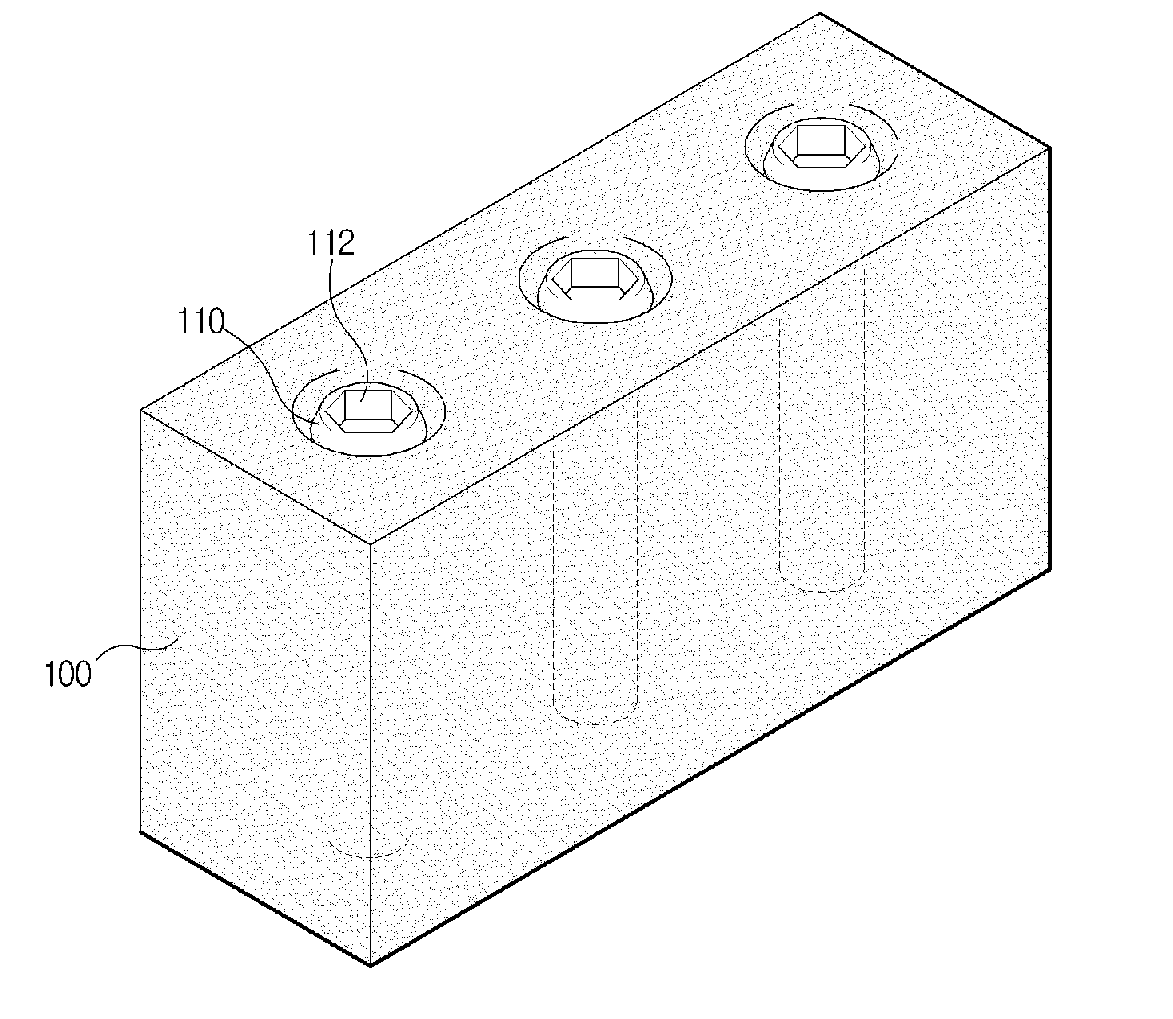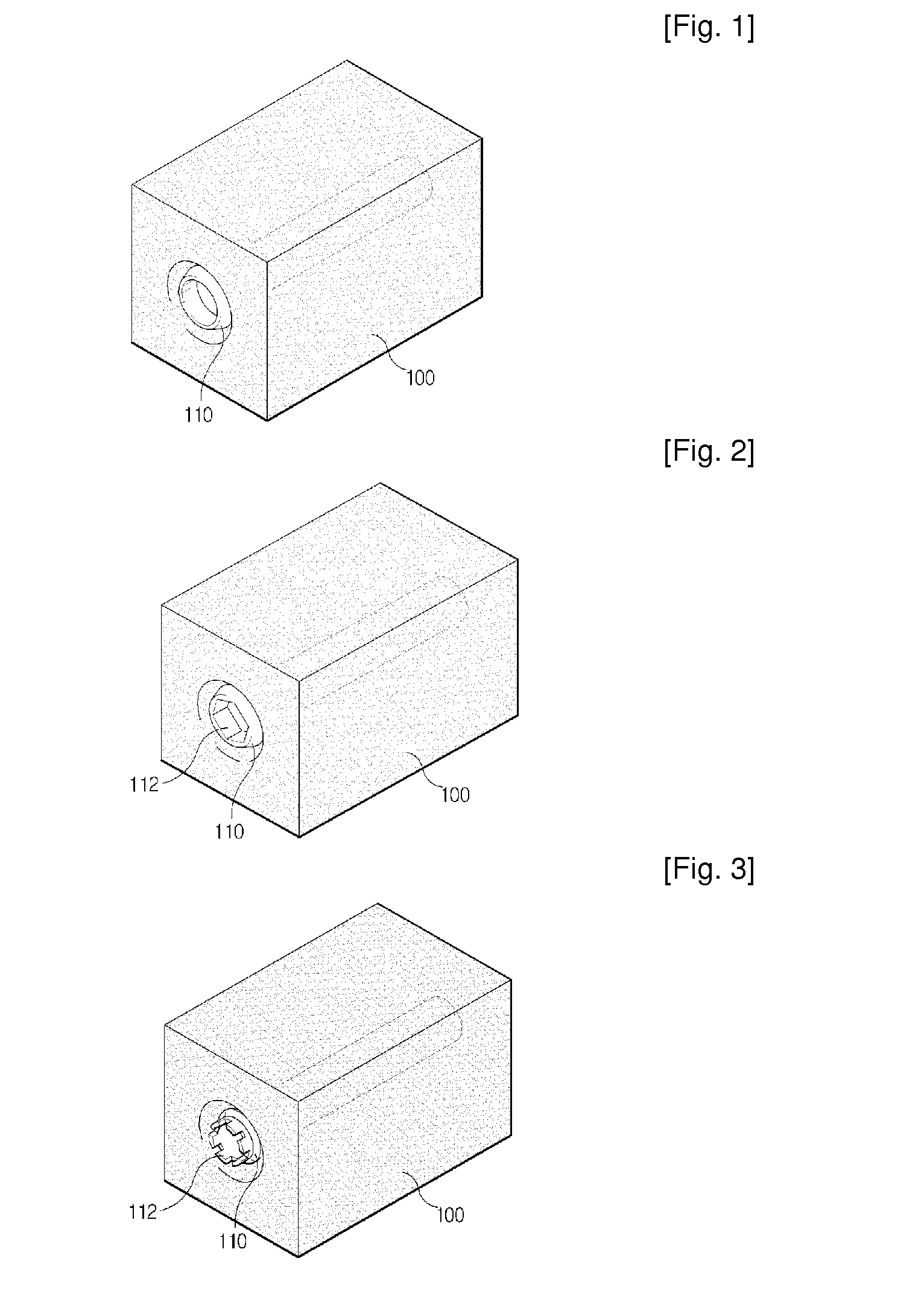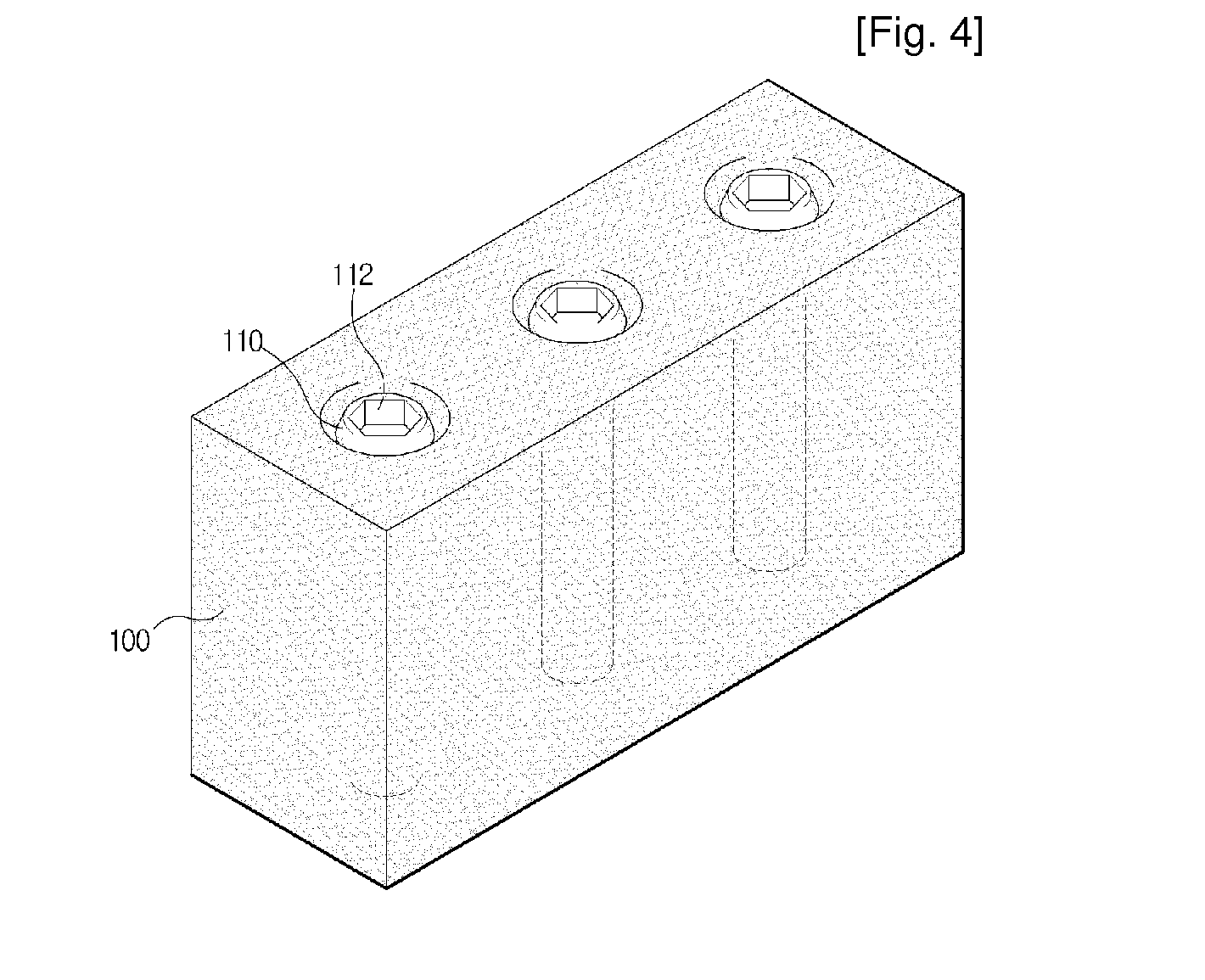Blocking Having Joining Structure of Dental Implant Abutment and Upper Structure and Manufacturing Method of the Same
a technology of dental implants and joining structures, which is applied in the field of block, can solve the problems of insufficient ceramic technology, insufficient working efficiency and tooth color, and high cost of dental implants, and achieve the effect of easy formation
- Summary
- Abstract
- Description
- Claims
- Application Information
AI Technical Summary
Benefits of technology
Problems solved by technology
Method used
Image
Examples
example 1
A Powder Forming Technique for Bidirectional Shrinkage Control
[0057]In the present example, a block is formed in a uniaxial die press having a maximum forming pressure of 20,000 psi and a cold isostatic press having a maximum pressure of 4,000 bar using materials having the compositions given in Table 1 under forming conditions set forth above. In uniaxial die pressing, a mold design for pressing and forming pressure were optimized, and tests for evaluating bidirectional shrinkage upon isostatic pressing were conducted for bidirectional shrinkage control (see Table 2 below).
TABLE 1The composition of materials of a block adopted for a dental implantClassificationCompositionZirconia97.0 mol % ZrO2, 3.0 mol % Y2O3Composite of zirconia / alumina10~90 vol % ZrO2, 90~10 vol % Al2O3
TABLE 2The condition for forming a block for a dental implantHolding timeand pressureBidirectionalProcessForming pressuredropshrinkage controlUniaxial dieOver formingOver 10PressingPressingstarting pointSecondsCol...
example 2
Techniques for Standardization of the Forming Condition of a Block by Primary Sintering and for the Evaluation of a Shrinkage Rate
[0059]In the present example, a technique for standardizing the forming condition of a block through pre-sintering was established. In detail, the blocks having undergone the uniaxial die pressing and the cold isostatic pressing were pre-sintered at various temperatures, and then, by examining the hardness and the density of the blocks, blocks suitable for machining were prepared. Further, by examining the forming shrinkage, attributable to the pressure of cold isostatic pressing (CIP), and pre-sintering shrinkage, a shrinkage evaluation technique was established. In order to improve machining efficiency, the blocks were sintered in a low-temperature sintering furnace while a primary sintering temperature was changed between 990° C. and 1,020° C., and the hardnesses of these pre-sintered products were measured in a micro Vickers hardness tester. Thereupon...
example 3
Reliability Evaluation of a Block
[0061]In order to check the long-term reliability of the method for manufacturing a block having a structure for joining an abutment and a superstructure for a dental implant, after conducting a bidirectional bending strength test, stability was observed through Weibull analysis. First, after preparing thirty Φ16*1.2 T disk pieces made of the same material as a block, the bidirectional bending strength tests were conducted using a universal material tester (Houns-field Test Equipment Ltd., U.K.), and the long-term stability was checked through the Weibull analysis for the measured strength values.
[0062]Here, a bidirectional bending strength value over 1,000 MPa, which represents an excellent property value, greater than 6,000 MPa, as the allowable strength value of the abutment for a dental implant, was obtained, and a Weibull coefficient m was 8.41, which means that the long-term stability could be confirmed.
[0063]Moreover, in the present invention,...
PUM
 Login to View More
Login to View More Abstract
Description
Claims
Application Information
 Login to View More
Login to View More - R&D
- Intellectual Property
- Life Sciences
- Materials
- Tech Scout
- Unparalleled Data Quality
- Higher Quality Content
- 60% Fewer Hallucinations
Browse by: Latest US Patents, China's latest patents, Technical Efficacy Thesaurus, Application Domain, Technology Topic, Popular Technical Reports.
© 2025 PatSnap. All rights reserved.Legal|Privacy policy|Modern Slavery Act Transparency Statement|Sitemap|About US| Contact US: help@patsnap.com



